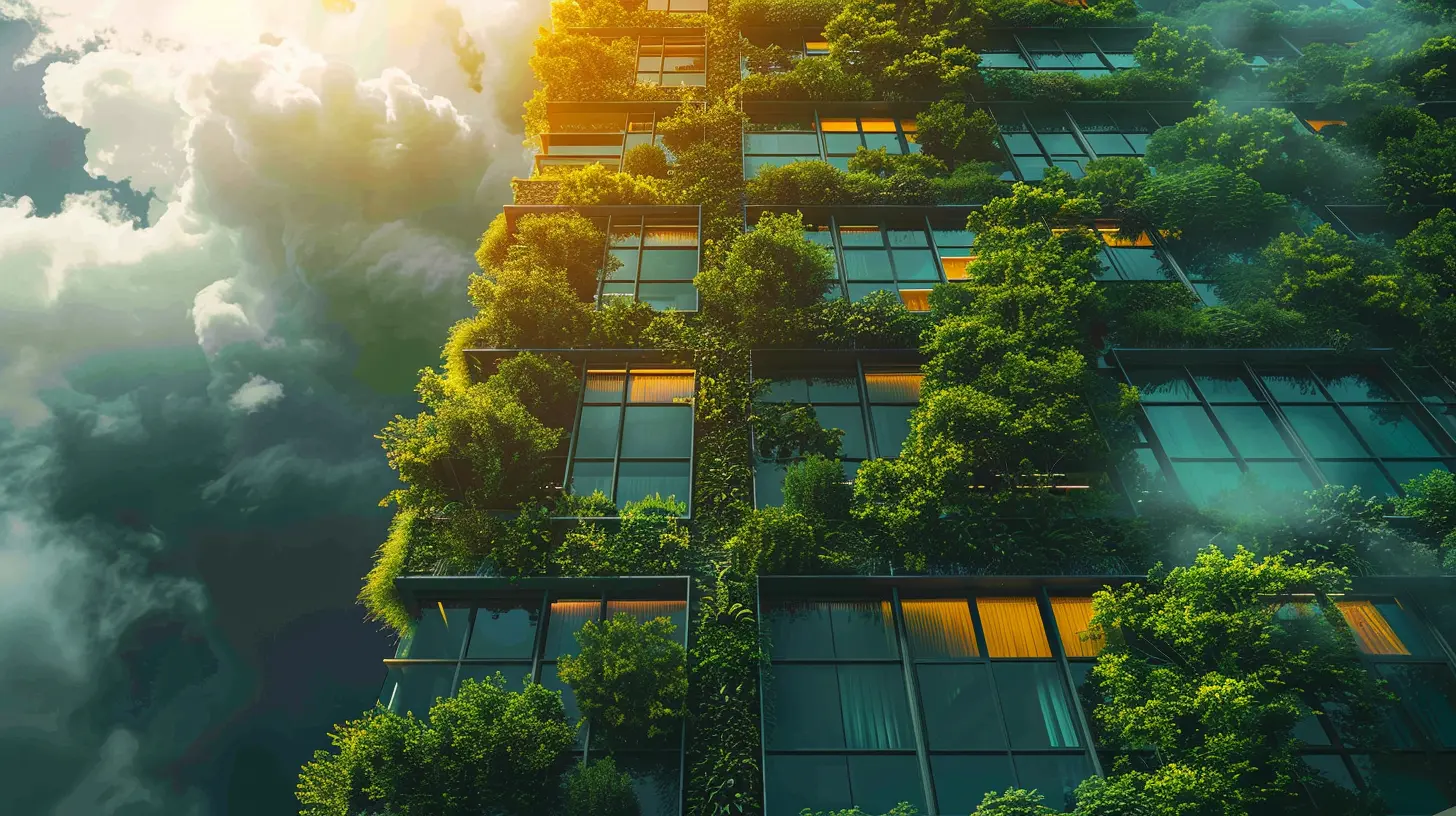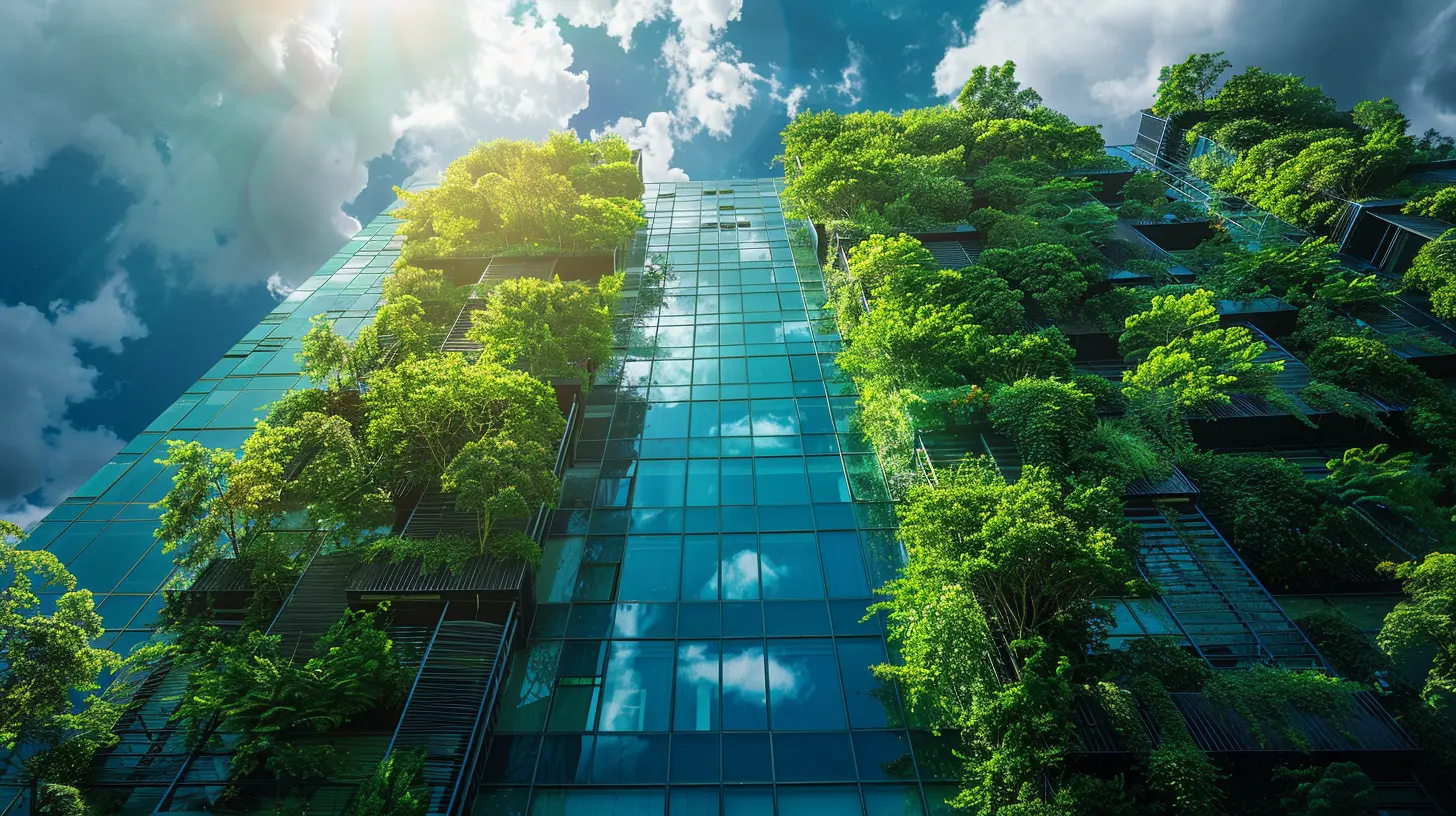Revolutionizing Construction: Green Tech Building Materials
13 November 2025
When you think about construction, it's easy to picture towering cranes, dust-filled job sites, and heavy-duty machinery. But there's a quiet revolution happening behind the scenes—one made of innovation, eco-consciousness, and some pretty mind-blowing technology. We're talking about green tech building materials, and yes, they're reshaping the way we build our homes, offices, and cities.
So, what’s the big deal? Why should we even care about green tech in construction? Well, because our planet's not getting any cooler (literally), and traditional construction methods aren't doing it any favors. It’s time to build smarter, cleaner, and more sustainably. Let’s dig into how green building materials are shaking things up.
What Are Green Tech Building Materials?
Let’s start simple. Green tech building materials are products specifically designed to reduce environmental impact. They do this by being energy-efficient, made from recycled or renewable resources, biodegradable, or offering better durability (which means fewer replacements and less waste over time).Think of them as the superheroes of the construction world—quietly saving the earth one building at a time.
Why We Need Them—Now More Than Ever
Climate change is no longer just a buzzword—it’s a reality. The construction industry alone contributes to nearly 39% of global carbon dioxide emissions. Shocking, right? But here’s the good news: we can change that.Switching to green building materials helps lower:
- Carbon footprint
- Energy consumption
- Water usage
- Construction waste
It’s like choosing a reusable water bottle over buying plastic ones every day—but on a much, MUCH bigger scale.
The Coolest Green Tech Building Materials You Should Know About
Ready to geek out a bit? Here are some of the most innovative and sustainable building materials turning heads in the industry.1. Hempcrete
Yes, hemp—the same plant used in textiles and CBD—is also a super material in construction. Hempcrete is a mixture of hemp hurds (the woody core of the plant), lime, and water. It’s lightweight, insulating, mold-resistant, and carbon-negative (meaning it absorbs more CO₂ than it emits).And get this—it’s fire-resistant too. Mother Nature really nailed it with this one.
2. Cross-Laminated Timber (CLT)
CLT is like LEGO for grown-ups. It’s made by gluing layers of timber at perpendicular angles, creating slabs that rival steel and concrete in strength.Benefits? It’s renewable, faster to install, and has a smaller carbon footprint than traditional materials. Plus, it gives buildings a warm, aesthetic feel. Win-win.
3. Recycled Steel
Steel is one of the most recycled materials out there, and using it in buildings reduces the demand for virgin ore mining. It’s strong, durable, and can be pre-fabricated, which cuts down on construction time and waste.If you're dreaming of a sleek industrial-style home, recycled steel could be your best friend.
4. Mycelium
This one sounds straight out of a sci-fi flick. Mycelium is the root structure of fungi—yep, mushrooms. It can be grown into custom shapes, is 100% biodegradable, and surprisingly strong.Think of it as nature’s version of foam insulation, except it doesn’t end up polluting oceans for centuries.
5. Solar Tiles
Move over, bulky solar panels—solar tiles integrate directly into your roof. They do everything traditional shingles do, but they also generate electricity. Talk about multitasking.Brands like Tesla are already rolling these out, and it’s only a matter of time before they become mainstream.
6. Low-E Windows
Ever notice how your house heats up like a sauna during summer? Low-emissivity (Low-E) windows are coated in microscopic layers of metallic oxide, helping reflect heat away while still letting light in.It’s like giving your windows sunglasses. Cool, right?
How Green Tech Materials Improve Building Performance
Switching to eco-friendly materials isn’t just a win for the planet—it’s a win for your wallet too.Here’s why:
- Energy savings: Better insulation and passive solar design can slash your power bills.
- Durability: Materials like CLT and recycled steel last longer, meaning fewer repairs.
- Healthier indoor air: Natural materials often release fewer toxic chemicals.
- Increased property value: Green-certified buildings often attract higher resale prices.
So investing green up front pays off long term. It’s like eating healthy—it might cost more now, but it'll save you on doctor bills later.
Challenges to Adoption (And How We Can Overcome Them)
Not everything is sunshine and solar tiles. The transition to green materials faces some hurdles:1. Higher Upfront Costs
Yep, some green materials can cost more at the start. But when you factor in energy savings and durability, the long-term costs can actually be lower.Tip: Look into government rebates and tax incentives for green building—many regions offer them.
2. Lack of Awareness
Many builders and homeowners simply don’t know these materials exist, or how to use them.Solution? Education. That’s why articles like this one exist—to spread the word and ignite a collective switch.
3. Limited Availability
Some materials like mycelium or hempcrete aren't available everywhere just yet.But as demand grows, supply chains are expanding. It's a classic case of “if you build it, they will come.”
Trends Driving Green Construction Forward
Let’s look at what’s pushing this green wave forward—these trends are shaping the future of how we build.Smart Buildings Meet Green Materials
Imagine a building that not only uses sustainable materials but also thinks for itself—adjusting temperature, light, and water use based on occupancy and weather. Smart and green are joining forces, and the result is nothing short of futuristic.Modular and Prefab Construction
Off-site construction isn't just faster—it also produces less waste. Combine this with green materials, and you get a construction process that’s efficient, clean, and cost-effective.Circular Economy in Construction
Instead of the old “use and toss” model, builders are now designing for reuse. This means materials can be disassembled and repurposed in future projects. Think of it as LEGO for the grown-up green world.Real-World Examples of Green Tech in Action
Let’s talk proof. Here are a few times green tech building materials stole the spotlight.The Bullitt Center – Seattle, USA
Often called the “greenest commercial building in the world,” it’s made with FSC-certified wood, features composting toilets, solar panels, and was designed to last 250 years. That’s longer than most of us plan to live!One Central Park – Sydney, Australia
This residential tower sports a vertical garden that spans its façade. Besides looking stunning, the greenery filters carbon dioxide, boosts oxygen, and reduces the building’s overall temperature.The Edge – Amsterdam, Netherlands
Labeled the smartest and one of the most sustainable offices, it uses solar energy, rainwater harvesting, and recycled building materials. Big achievement? It actually produces more energy than it consumes.How You Can Start Building Green
You don’t need to construct a skyscraper to make a difference. Whether you’re building a new home or just remodeling your kitchen, there are tons of small steps you can take:- Use locally sourced materials
- Opt for recycled or reclaimed wood
- Install Low-E windows
- Choose VOC-free paints and adhesives
- Look into solar-ready roofing options
Even tiny moves, like better insulation or energy-efficient lighting, add up in a big way.
The Bottom Line
Green tech building materials aren’t just a trend—they’re the future. They’re the bricks and beams of a more sustainable, responsible, and innovative construction era. Whether you're a builder, homeowner, or just someone who geeks out on cool tech, the shift toward green is something to get excited about.So next time you see a concrete jungle rise up, ask yourself—could it have been built smarter, cleaner, and greener?
Odds are, the answer is yes.
all images in this post were generated using AI tools
Category:
Green TechnologyAuthor:

Pierre McCord

